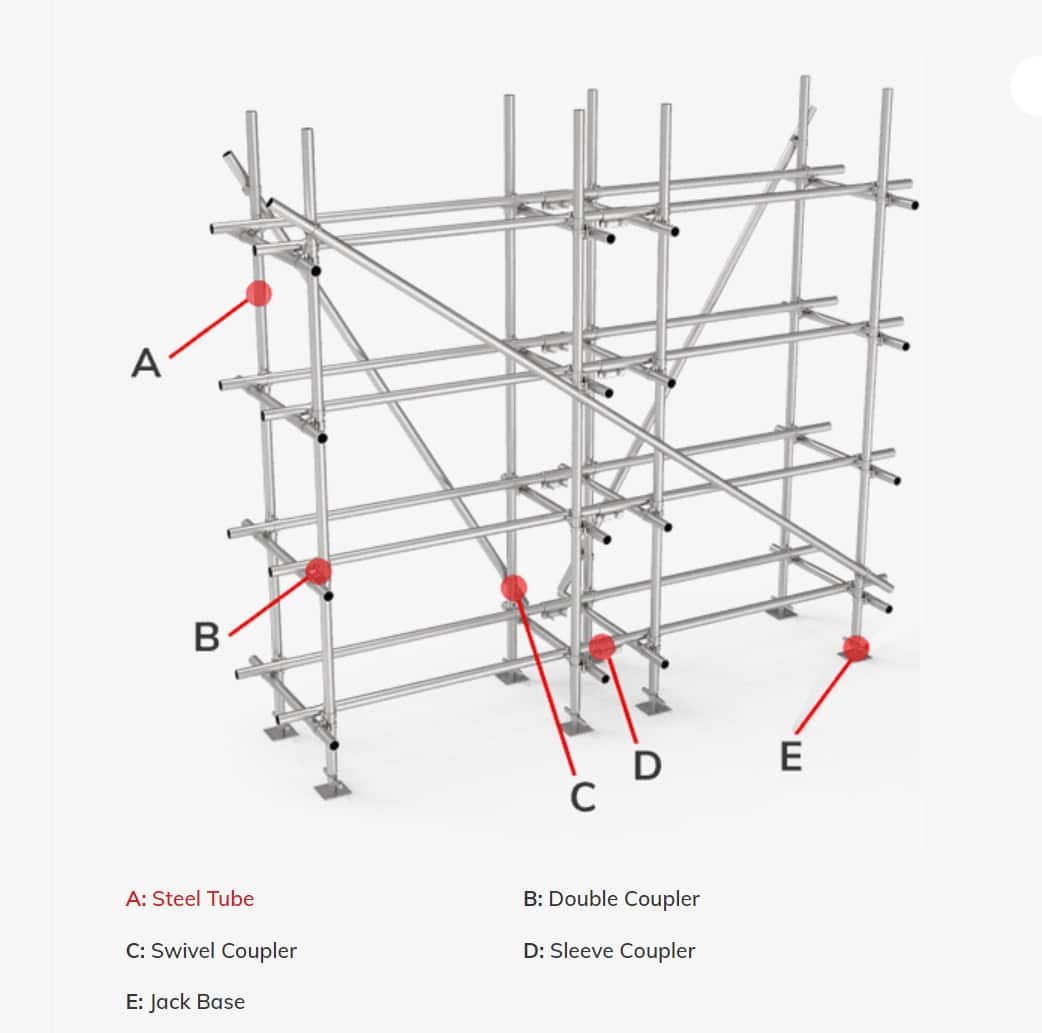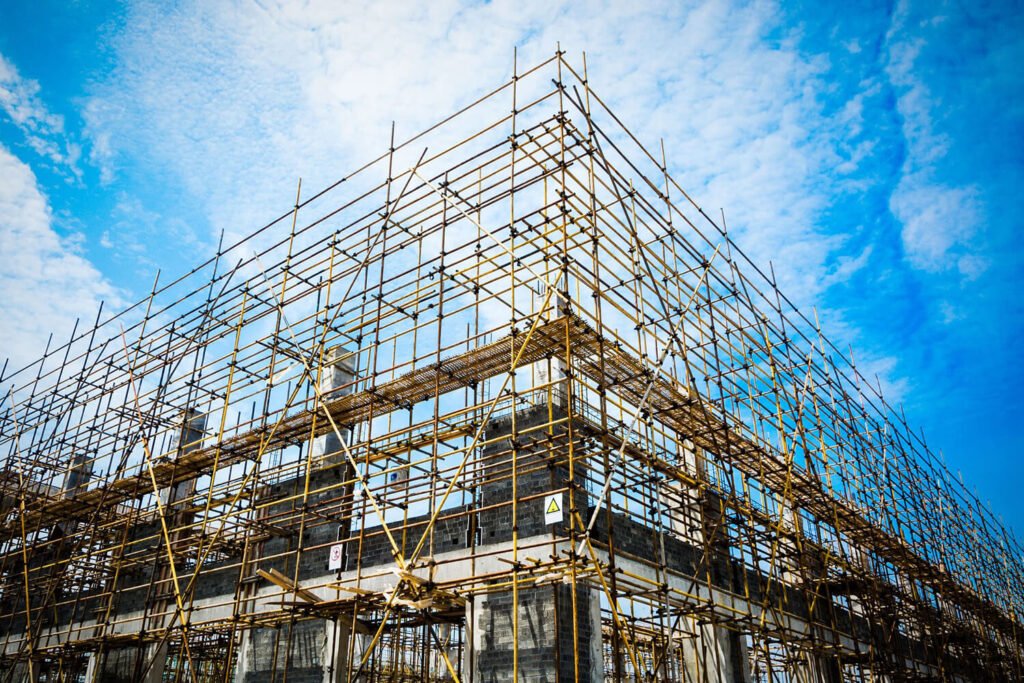Secure and Efficient Scaffolding in Surrey for Any Construction Task
Secure and Efficient Scaffolding in Surrey for Any Construction Task
Blog Article
Exploring the Various Kinds Of Scaffolding Made Use Of in Construction Jobs
The building and construction sector depends greatly on numerous kinds of scaffolding to meet particular job needs, each offering distinctive benefits and applications. Conventional structure scaffolding gives a tough structure for general tasks, while suspended scaffolding is crucial for work on high-rise structures. Other options, such as system and rolling scaffolding, accommodate performance and flexibility, respectively. The cantilever variant confirms important in city settings where area is constricted. Comprehending the nuances of these scaffolding kinds is vital for optimizing safety and efficiency on building and construction sites, triggering a closer evaluation of their unique characteristics and applications.

Conventional Frame Scaffolding
Traditional structure scaffolding is among the most widely made use of methods in the building and construction market because of its toughness and convenience. This system includes horizontal and upright frames that are assembled to produce a secure system for workers and products. The primary parts consist of upright articles, horizontal journals, and diagonal braces, which together provide a solid framework that can sustain significant lots.
One of the key advantages of conventional frame scaffolding is its flexibility to various building jobs, ranging from domestic buildings to large business frameworks. The modular layout permits very easy setting up and disassembly, making it reliable for both temporary and long-term jobs. Furthermore, the system can be tailored in height and width, suiting different building layouts and website problems.
Safety and security is paramount in scaffolding applications, and typical frame systems are outfitted with guardrails and toe boards to protect against falls and guarantee worker protection. In addition, regular examinations and adherence to safety policies are vital in preserving the honesty of the scaffold. On the whole, standard frame scaffolding remains an essential choice in the building industry, providing a trusted platform for labor and boosting total job performance

Suspended Scaffolding
Suspended scaffolding supplies a distinct service for construction jobs that call for access to raised surfaces, particularly in circumstances where standard framework scaffolding might be impractical. This kind of scaffolding is typically suspended from the roofing system or top degrees of a framework, making use of a system of systems, ropes, and pulleys to produce a working area that can be adapted to numerous heights.
One of the primary advantages of put on hold scaffolding is its adaptability. It can be conveniently rearranged or lowered to suit modifications in construction needs, making it suitable for jobs such as home window setup, façade work, and maintenance on skyscrapers. Additionally, the very little impact of put on hold scaffolding permits better use ground room in city environments, where space is often limited.
Security is an essential consideration in the usage of put on hold scaffolding. Appropriate rigging and securing systems must be employed to make certain stability and avoid crashes. Operators must additionally be educated in the secure use this devices. On the whole, put on hold scaffolding gives a effective and effective option for accessing hard-to-reach areas in various building scenarios, enhancing both efficiency and safety and security on website.
System Scaffolding
System scaffolding, frequently considered a modern option in the scaffolding sector, includes pre-engineered elements that can be swiftly constructed and adjusted for numerous building and construction projects. Scaffolding. This kind of scaffolding is identified by its modular layout, which enables convenience and efficiency on work sites, accommodating different elevations and structural needs
Commonly made from high-strength steel or light weight aluminum, system scaffolding uses boosted toughness and stability. The components include vertical blog posts, horizontal ledgers, and angled braces, which adjoin securely, making sure a durable framework. The layout commonly integrates standard installations, simplifying setting up and disassembly procedures, consequently decreasing labor time and expenses.

Rolling Scaffolding
Moving scaffolding is a functional option to standard fixed scaffolding, developed for wheelchair and convenience of use on building and scaffold netting construction sites. This kind of scaffolding consists of a system sustained by structures with wheels, enabling workers to quickly move it as needed. The flexibility feature considerably improves efficiency, as it decreases downtime associated with dismantling and constructing dealt with scaffolding.
Usually constructed from lightweight products such as aluminum or steel, rolling scaffolding supplies a sturdy yet portable remedy for projects requiring frequent repositioning - Scaffolding. It is particularly useful in jobs such as painting, drywall installment, and electrical work, where access to numerous heights and locations is necessary
Security is vital in rolling scaffolding design, with attributes such as securing wheels to avoid unplanned motion when in use, and guardrails to safeguard workers from falls. In addition, lots of versions are adjustable in height, suiting numerous task demands.
Cantilever Scaffolding

The layout of cantilever scaffolding usually involves using brackets or arms secured to a structure or framework, enabling the platform to extend exterior safely. Safety and security is critical; hence, these scaffolds have to be engineered to endure environmental problems and numerous loads. Regular inspection and maintenance are essential to ensure architectural integrity look what i found and employee safety and security.
Cantilever scaffolding is favored for its versatility and reliable usage of space, making it a prominent option in metropolitan environments where area restraints are typical. In addition, it helps with easier accessibility to high elevations, eventually adding to the overall effectiveness of building and construction jobs. As with all scaffolding types, proper training and adherence to safety requirements are important for workers using cantilever scaffolding.
Verdict
Typical structure scaffolding supplies stability, while suspended scaffolding provides convenience for raised jobs. System scaffolding facilitates fast assembly, and rolling scaffolding enhances movement for varying work environments.
Conventional structure scaffolding supplies a sturdy foundation for basic jobs, while put on hold scaffolding is crucial for work on high-rise frameworks.Rolling scaffolding is a functional alternative to conventional set scaffolding, designed for movement and convenience of usage on building and construction websites. As with all scaffolding kinds, proper training and adherence to security requirements are critical for workers utilizing cantilever scaffolding.
Typical framework scaffolding gives stability, while suspended scaffolding uses versatility for elevated jobs. System scaffolding helps with quick setting up, and rolling scaffolding enhances mobility for differing job settings.
Report this page